Results show enhanced growth performance and feed efficiency
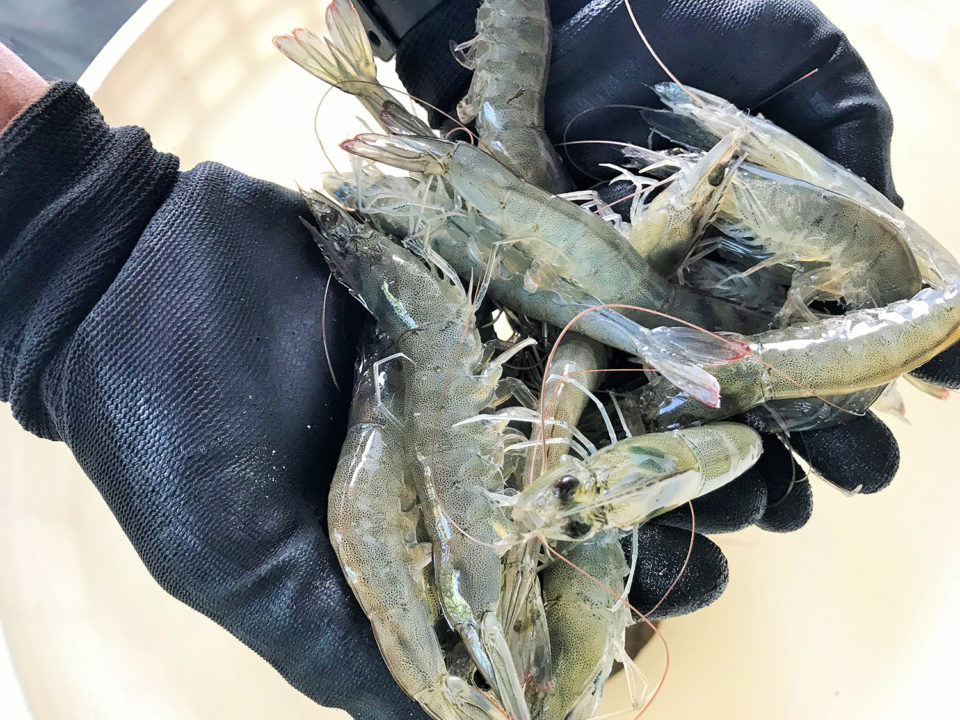
In shrimp farms, feed is delivered by hand-broadcasting from pond walls or using boats during daylight. Juvenile shrimp is fed two to as much as six times daily depending on pond size and intensification level. In semi-intensive ponds with up to 30 shrimp per square meter, feed is delivered from two to four times daily. Increased feeding frequency can be applied in intensive ponds but feeding more often can be laborious as mechanical feeding is still not widespread in the industry. Penaeid shrimp have small stomachs and graze continuously throughout the day and night.
The daily administration of feed in short feeding intervals appears to represent a better strategy in the culture of marine shrimp. Although several studies in the past have concluded that it is not advantageous to feed juvenile shrimp more than two or three times a day, more recent findings conflict these observations. Arnold et al. (2016) reported that feeding black tiger shrimp (Penaeus monodon) six versus twice daily can significantly reduce FCR and enhance growth rates. And Jescovitch et al. (2018) informed that feeding juveniles of Pacific white shrimp (Litopenaeus vannamei) multiple times day and night using automatic feeders versus by hand twice during the day result in a significantly faster growth and increased body weight and yield.
The long-term water exposure of feed due to the slow feeding behavior of penaeid shrimp can result in the loss of critical nutrients, including amino acids (AA). With a trend towards the reduction of fishmeal in aquatic feeds, crystalline amino acid supplementation is becoming popular in shrimp feed formulation. This requires the implementation of more advanced feeding strategies by farmers.
This article summarizes the original publication (Aquaculture International 2019 27:337–347 https://doi.org/10.1007/s10499-018-0330-7) of a study comparing multiple feeding (10 meals) using an automatic device operated during the day and day and night versus manual feeding twice and four times daily. We investigated if these feeding strategies could impact the growth performance of juvenile L. vannamei fed a low-fishmeal diet supplemented with crystalline amino acids. The first author acknowledges the support from a research productivity fellowship (CNPq/MCT, PQ# 303678/2017-8). We thank Dr. Leandro Fonseca Castro (Zeigler Bros Inc., USA) for his detailed drawing of our automatic feeding device.
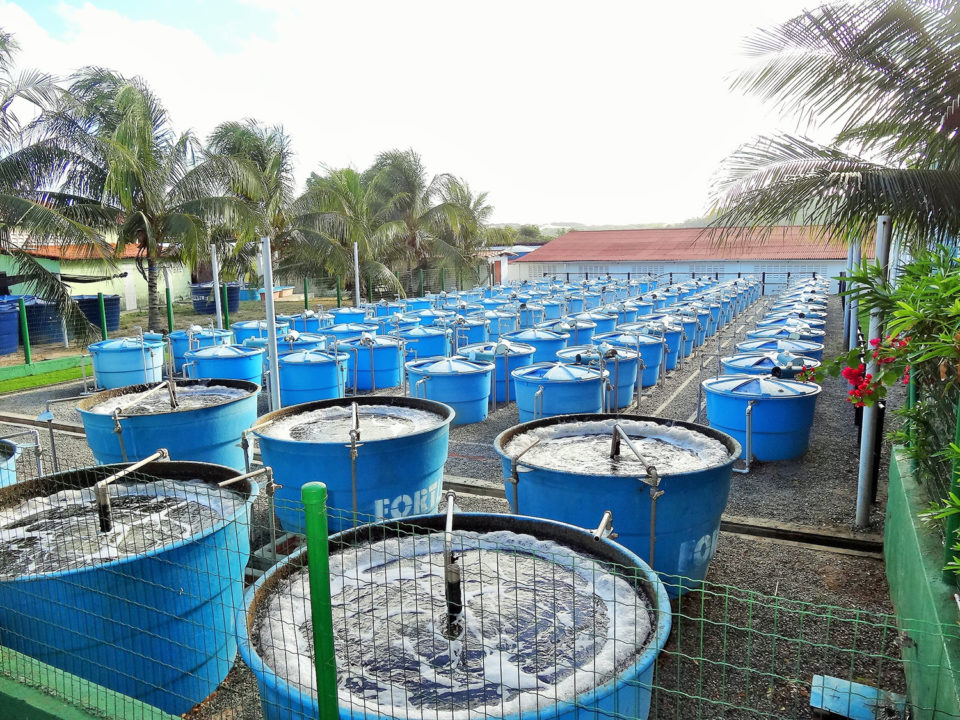
Study setup
The experimental rearing system included independent outdoor tanks, round, blue in color, with 1.14 meters of inner diameter on the bottom, 0.74-meter height and a total bottom area of 1.02 square meters. Pacific white shrimp (L. vannamei) postlarvae (PL10) were brought to the laboratory from a commercial hatchery and reared in a nursery system with three tanks of 23 cubic meters(15.9-square-meter bottom area) for 42 days. Subsequently, juvenile shrimp were first size-graded to homogenize body weights. Then, a total of 1632 shrimp of 1.06 ± 0.16 grams (mean ± standard deviation) were stocked in 16 rearing tanks of 1 cubic meter at 100 shrimp per square meter. Shrimp were first acclimated for 10 days with a commercial crumbled feed for marine shrimp and then reared for an additional 70 days with an experimental diet.
The experimental diet was designed to contain 32 percent crude protein (on a dry matter basis, DM) and the lowest possible amount of marine ingredients. The dietary inclusion of salmon byproduct meal, squid meal and salmon oil was locked at 3.00 percent, 1.08 percent and 3.00 percent of the diet (as is basis), respectively.
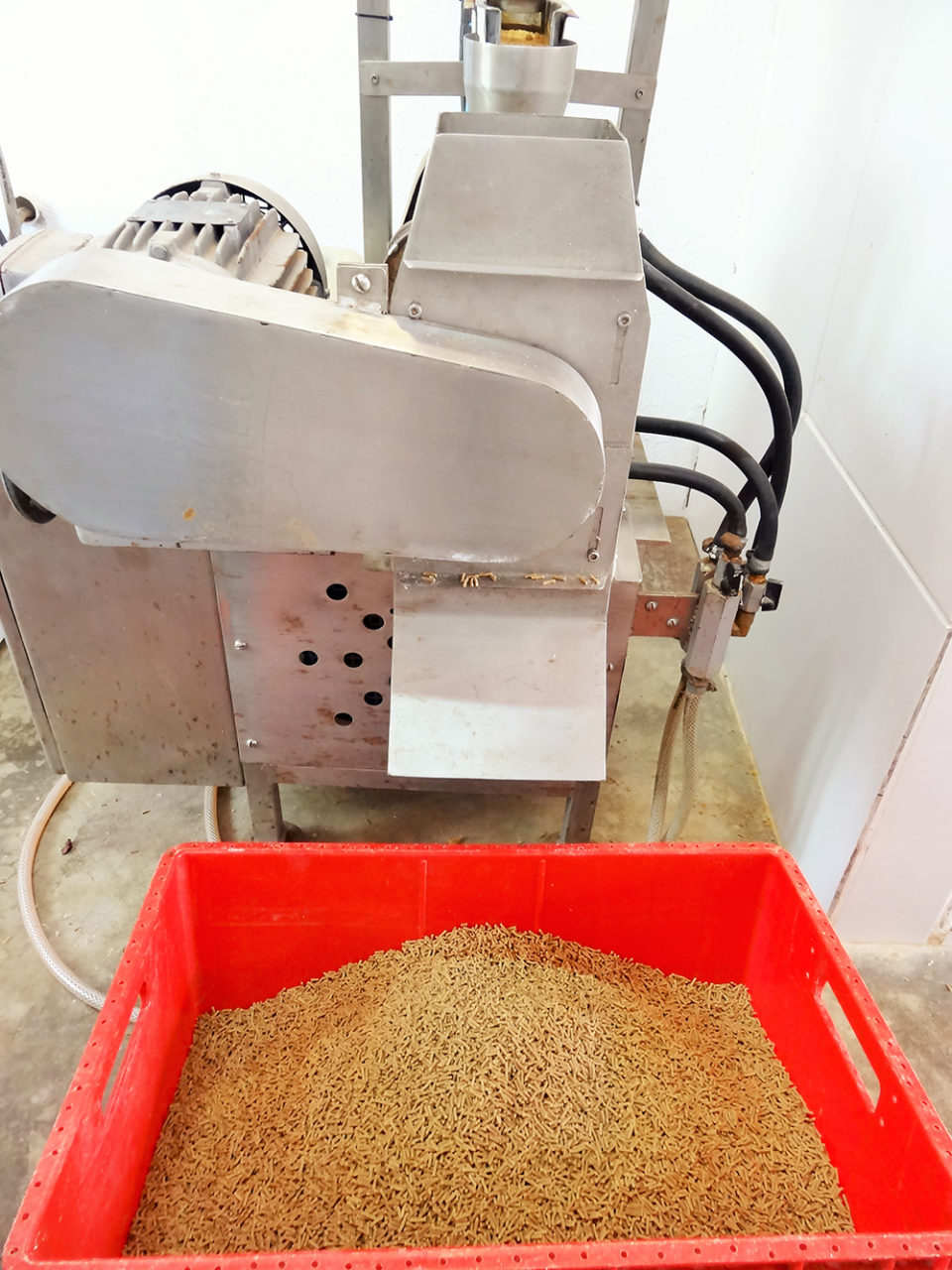
To maximize shrimp growth, the diet was supplemented with DL-methionyl-DL-methionine (AQUAVI® Met-Met, Evonik Nutrition & Care GmbH, Hanau, Germany), L-Lysine, L-Threonine, and L-Arginine at 0.36, 1.29, 0.40, and 0.25 percent, respectively. This resulted in a total dietary methionine, lysine, threonine, and arginine content of 0.81, 1.89, 1.38, and 2.01 percent (DM basis), respectively, with a corresponding Met+Cys (cysteine) level of 1.28 percent. Diets were manufactured with laboratory equipment as described in Nunes et al. (2011).
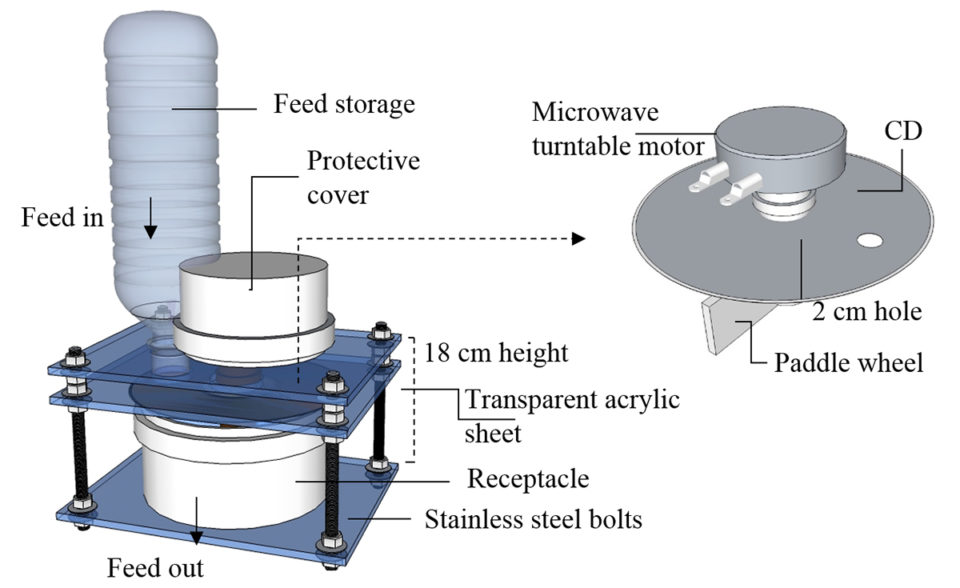
Shrimp were either fed manually, twice or four times daily, using one feeding tray allocated in each rearing tank, or fed with an automatic feeding device positioned over the top of each tank to deliver multiple meals (10 in total) during the day (Day) or during the day and night (D&N) at programmed times. Feeding trays measured 2.5 cm in height and 29.8 cm in diameter (area of 697.5 square centimeters), a large area to avoid any bias from possible feed competition.
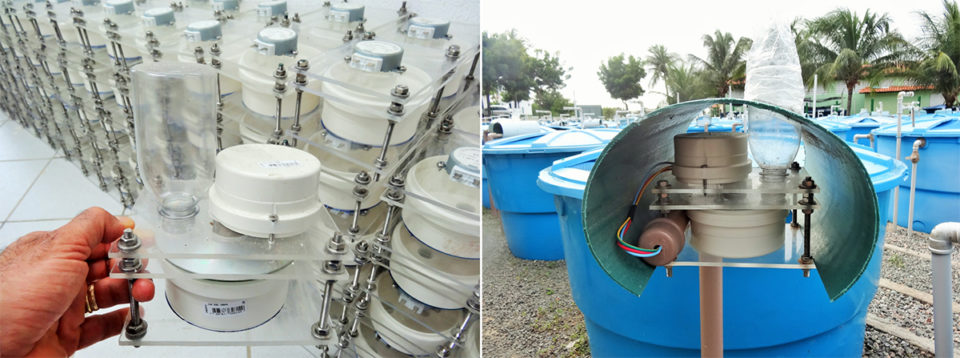
Both feeding methods (manual and automatic) adopted the same feeding table to adjust daily meals. Feed rations were adjusted on a daily basis assuming an estimated 1.5 percent weekly drop in shrimp survival across all rearing tanks. Feed rations were adjusted biweekly (14, 28, 42, and 56 days of rearing) by weighing individually five animals per tank after a 10-day acclimation period. Until the next weight check, feed ration increased assuming mean daily weight shrimp gains for each tank, maintaining a 1.5 percent weekly drop in survival. Whenever observed in feeding trays, all feed leftovers were collected, dried, weighed, and discarded. Eight rearing tanks were randomly assigned for each feeding frequency.
For additional information on rearing tanks and shrimp stocking; feeds and feeding; system management; and shrimp performance and statistical analyses, please consult the original publication.
Results and discussion
Results of the study demonstrated that feeding L. vannamei multiple times instead of only two or four times a day enhances shrimp survival, growth performance, and FCR. Our findings are in agreement with other researchers. Increasing feeding frequency leads to a longer exposure of shrimp to fresh feed which results in a better growth performance and feed utilization by L. vannamei.
After 11 weeks of rearing, shrimp survival, growth performance and feed efficiency were significantly affected by feeding frequency and time of feeding (Table 1). Final shrimp survival was statistically higher when shrimp were fed multiple times, either during the day or during the day or night. However, no differences in final survival could be detected when feed was delivered manually twice or four times during the day.
Nunes, multiple feedings, Table 1
| Growth performance | Manual/feeding trays (2/day) | Manual/feeding trays (4/day) | Automatic/feed dispenser (multiple times per day) | Automatic/feed dispenser (multiple times, day and night) | ANOVA P |
|---|---|---|---|---|---|
| Final survival (%) | 83.46 ± 8.01 a | 85.42 ± 11.76 a | 94.24 ± 6.10 ab | 96.81 ± 4.18 b | 0.008 |
| Final body weight (g) | 8.74 ± 0.63 a | 10.95 ± 1.33 b | 11.33 ± 0.67 c | 11.33 ± 0.32 c | <0.0001 |
| Growth (g/week) | 0.67 ± 0.06 a | 0.89 ± 0.12 b | 0.88 ± 0.06 b | 0.91 ± 0.03 b | <0.0001 |
| Gained yield (g/m2) | 623 ± 69 a | 838 ± 56 b | 942 ± 75 c | 1,004 ± 48 c | <0.0001 |
| Feed delivered (g/shrimp)* | 15.2 ± 0.5 a | 16.3 ± 0.6 b | 16.3 ± 0.6 b | 15.9 ± 0.4 b | 0.001 |
| FCR | 2.46 ± 0.31 a | 1.94 ± 0.15 b | 1.74 ± 0.09 bc | 1.59 ± 0.08 c | 0.001 |
*Amount of feed delivered (g) per stocked shrimp.
Shrimp also grew faster when feeding frequency increased from two to four or more times a day or day and night. While at twice weekly growth was 0.67 ± 0.06 grams, increasing feed delivery to four times or more enhanced growth up to 0.91 ± 0.03 grams per week, regardless of feeding time or form of delivery, i.e., manual or mechanical feeding. No benefit was perceived in weekly growth when feeding frequency increased beyond four times a day, or when feed was delivered multiple times only during the day versus during the day/night.
Final shrimp body weight was enhanced progressively as feeding frequency increased from twice to four times to multiple times. Thus, feeding shrimp manually up to four times a day resulted in shrimp with a lower body weight (10.95 ± 1.33 grams) compared to shrimp fed mechanically several times. However, there was no significant increase in final body weight when shrimp were fed multiple times only during the day (11.33 ± 0.67 grams) compared to D&N (11.33 ± 0.32 grams). A similar response was found for gained yield. Yield was significantly improved by feeding shrimp more times a day, although differences were not apparent between multiple times during the day and D&N. Feeding shrimp manually four times resulted in a higher gain in yield compared to feeding only twice.
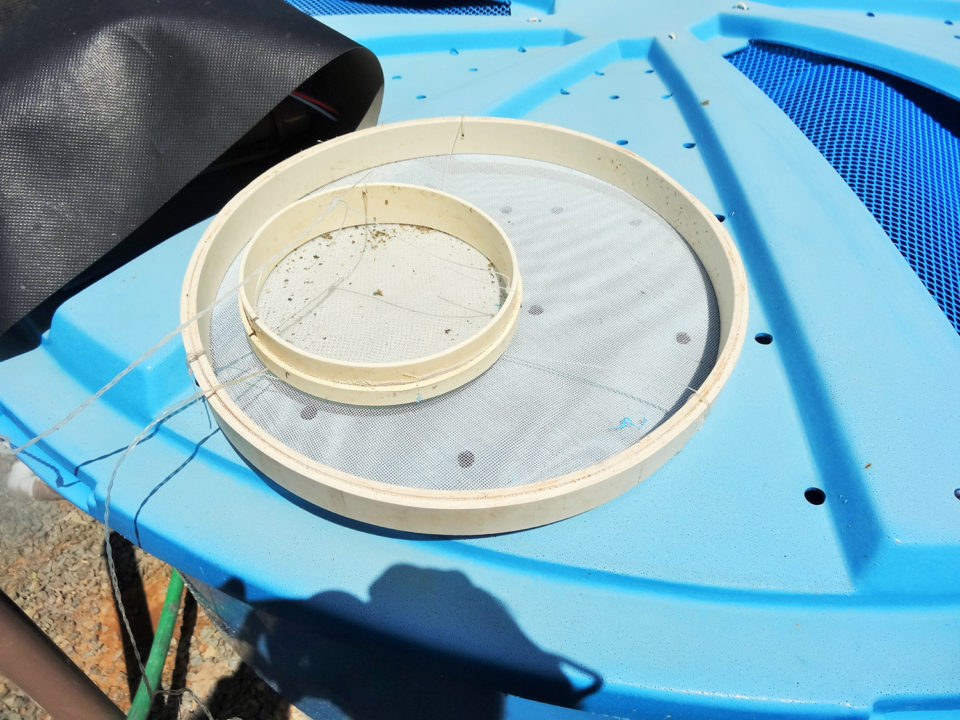
The amount of feed delivered when shrimp were fed only twice was significantly lower than feeding more times, either manually or mechanically (P < 0.05). There was also a positive effect in FCR (feed conversion ratio) when feed was delivered more times a day. FCR significantly dropped from 2.46 ± 0.31 at twice a day to 1.59 ± 0.08 at multiple times during the D&N. There was also an improvement in FCR when four times was compared to D&N, but not with multiple times during the day only.
The feed water stability results indicated a significant drop in stability with an increase in immersion period. The four-hour immersion period showed the lowest level of water stability among all periods evaluated.
Feed used in this study contained only 3 percent fishmeal and supplementation with crystalline amino acids (CAAs), including DL-Met-Met, L-Lysine, L-Arginine, and L-Threonine, was required to avoid nutrient deficiency. Supplemental AA other than DL-Met-Met are more prone to leaching. Xie et al. (2017) showed the diet supplemented with DL-Met has much more leaching rate of methionine than those supplemented with DL-Met-Met.
In another study, Niu et al. (2018) showed that DL-Met-Met is 286 to 300 percent more available than the regular DL-Met, partly related to their differences in leaching. Physical stability of pellets agitated in water showed a progressive loss in feed stability starting at two hours, dropping significantly at four hours. This suggests that leaching of feed nutrients increased proportionally to longer water immersion periods. Although we have not measured leaching of CAAs in water, fewer meals a day results in a longer feed exposure to water. This leads to a greater risk of rapid leaching of these and other dietary nutrients before feed ingestion. Shrimp can eat the bulk of feed ration within the first two hours after delivery.
However, significant leaching of CAAs can occur within the first 30 minutes of water exposure, as reported by several authors. But in our study, it is uncertain if an enhanced growth performance of shrimp was driven by a lower leaching of CAAs when shrimp were fed multiple times a day.
In agreement with the work of Velasco et al. (1999), we could not observe any benefit in shrimp performance when feeding multiple times during the day and night instead of multiple times only during the day. However, there was an improvement in shrimp survival, FCR and yield when feeding multiple times day and night was compared with only four times during the day. As opposed to other penaeid shrimp, L. vannamei appears to be more active in feeding during daylight. Thus, it is likely that feeding more frequently during the day and less often at night may allow increasing feeding frequency beyond the 10 times a day adopted in the present work.
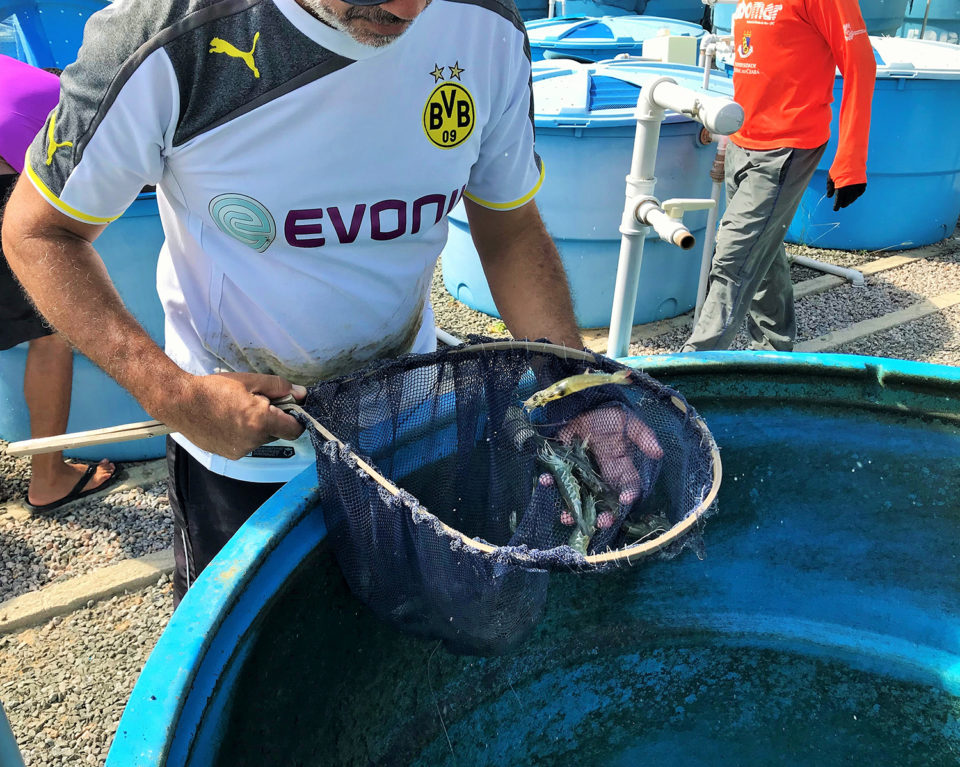
Perspectives
Supplementation of limiting nutrients, especially AAs, is becoming a common practice within shrimp feed producers driven by the strong trend towards low-fishmeal diets.Results of our study demonstrated that feeding multiple times a day results enhances survival, growth, and feed efficiency in juvenile L. vannamei when using a low-fishmeal diet supplemented with amino acids.
Despite significant advancements in shrimp nutrition, leaching of key dietary nutrients continues to impose several challenges. As no viable alternative appears to be available today, the increase in feeding frequency is the most obvious solution to this issue.
While the increase in manual feeding frequency in shrimp farms may not be practical and economical, several technologies and equipment are now accessible to the industry which allows the implementation of multiple feedings. This can range from mechanical blowers to time-controlled and acoustic feeding devices.
References available from the original publication or first author.
Now that you've reached the end of the article ...
… please consider supporting GSA’s mission to advance responsible seafood practices through education, advocacy and third-party assurances. The Advocate aims to document the evolution of responsible seafood practices and share the expansive knowledge of our vast network of contributors.
By becoming a Global Seafood Alliance member, you’re ensuring that all of the pre-competitive work we do through member benefits, resources and events can continue. Individual membership costs just $50 a year.
Not a GSA member? Join us.
Authors
-
Alberto J.P. Nunes, Ph.D.
LABOMAR–Instituto de Ciências do Mar
Universidade Federal do Ceará
Avenida da Abolição, 3207
Meireles, Fortaleza, Ceará 60.165-081, Brazil[114,98,46,109,111,99,46,108,111,117,64,110,112,106,111,116,114,101,98,108,97]
-
Dr. Hassan Sabry-Neto
LABOMAR–Instituto de Ciências do Mar
Universidade Federal do Ceará
Avenida da Abolição, 3207
Meireles, Fortaleza, Ceará 60.165-081, Brazil -
Francisco Hélio Pires da Silva
LABOMAR–Instituto de Ciências do Mar
Universidade Federal do Ceará
Avenida da Abolição, 3207
Meireles, Fortaleza, Ceará 60.165-081, Brazil -
Dr. Adhemar Rodrigues de Oliveira-Neto
Evonik Brasil Ltda
Rua Arquiteto Olavo Redig de Campos, 105.
Torre A, andar 13 e 14. São Paulo, São Paulo 04.711-904, Brazil -
Karthik Masagounder, Ph.D.
Evonik Nutrition & Care GmbH.
NC, 10-B531, Postfach 1345, Rodenbacher Chausse 4
63404 Hanau-Wolfgang, Germany
Tagged With
Related Posts

Aquafeeds
A look at protease enzymes in crustacean nutrition
Food digestion involves digestive enzymes to break down polymeric macromolecules and facilitate nutrient absorption. Enzyme supplementation in aquafeeds is a major alternative to improve feed quality and nutrient digestibility, gut health, compensate digestive enzymes when needed, and may also improve immune responses.
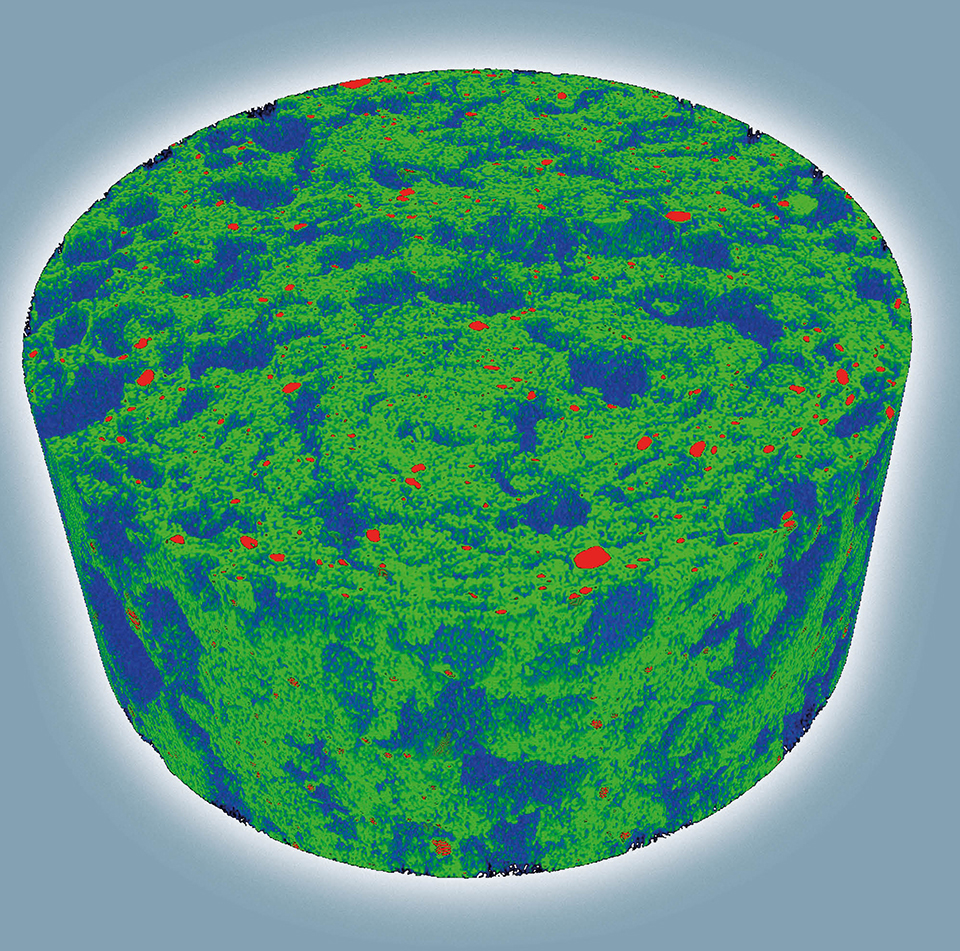
Aquafeeds
Alternative feed ingredients support continued aquaculture expansion
Identifying sources for essential macro- and micronutrients is important, as well as understanding how best to manufacture feed to required physical specifications when using these new raw materials.
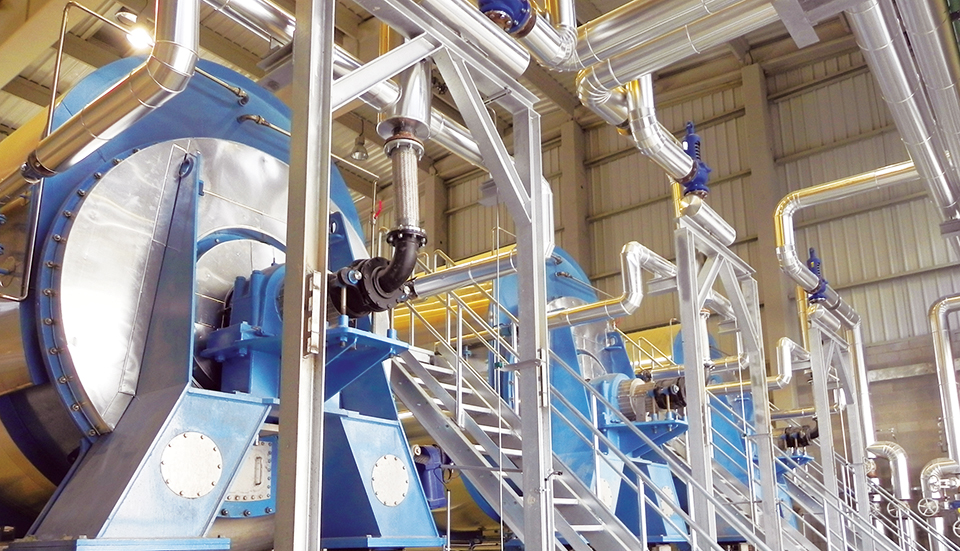
Aquafeeds
Animal byproduct concentrates useful tools in formulation
With the market volatility of fishmeal, as well as rising sustainability concerns, the aquaculture industry is seeking sources of protein, such as animal byproduct concentrates, to substitute for fishmeal.
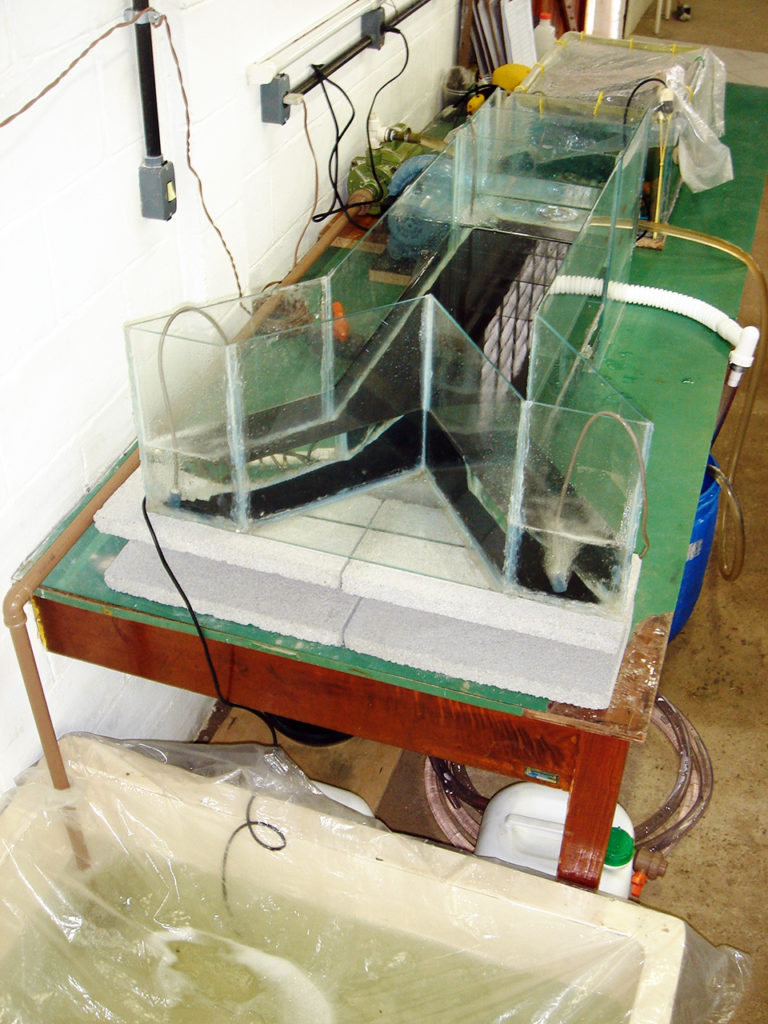
Aquafeeds
White shrimp study compares commercial feed attractants
A recent study in Brazil tested the efficacy of nine commercial feed attractants for Litopenaeus vannamei. Condensed fish-soluble protein, an amino acid complex with digested bivalve mollusk, and whole squid protein hydrolysate stimulated the highest feeding responses.



